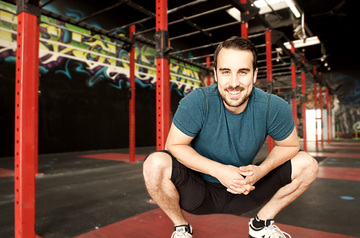Sacroiliac Dysfunction and Hip Impingement
My Battle With Back Pain
In 2011 I suffered a bad back injury while working out in the gym. It was the last in a string of low-back injuries and flare ups. It was also the straw that (almost literally) broke the camels back.
It turns out I had a condition called "femoroacetabular impingement" (FAI). Among athletes this is more commonly known as "hip impingement." It often results in front/anterior hip pain, groin pain, buttocks pain, etc.
I started getting serious about posture, mobility, flexibility and movement quality. Fast forward to 2015 and I haven't had any back pain in a long time. What was once I constant ache and quarterly injury has vanished completely.
One model that initially helped me begin to decipher the confusion that was my back pain was the "Joint-by-Joint approach."
The Joint by Joint Approach
The joint by joint approach is a model of viewing the body that helps make quick judgement calls about what to work on to get rid of pain or improve movement. It is a simplistic model, but a good one.
I recommend it as a good starting point when attempting to resolve your own body issues.
Here is a basic summary of the needs of each joint:
1. Foot (Stability)
The foot tends to be unstable and therefore could benefit from greater amounts of stability and motor control. The fact that we are never barefoot contributes to this.
2. Ankle (Mobility)
The ankle is stiff in most people and therefore could benefit from greater amounts of mobility and flexibility. Dorsiflexion limitation is the biggest example. This is also why deep squats and pistols are challenging for many people.
3. Knee (Stability)
The knee is often unstable and could benefit from more stability and motor control. This is why ACL rates are on the rise.
4. Hip (Mobility)
The hip is often tight and needs more mobility and flexibility. Paradoxically it also tends to need stability training specifically because it is the hip musculature that primarily controls knee position.
5. Low Back (Stability)
The lumbar and sacrum have a tendency toward instability or excessive movement. This is where "core training" comes into play to help stabilize the region. This is also a (seeming) paradox because most people complain about low back tightness, when in fact it is the lack of motor control over this area that leads to generalized stiffness as a consequence.
6. Upper Back (Mobility)
The thoracic spine is stiff in most desk dwellers and modern humans. Therefore it could benefit from greater amounts of mobility and flexibility (extension and rotation.) Our modern sitting culture is to blame for this and shoulder impingement is often a side effect.
7. Shoulder (Stability)
The shoulder joint has a tendency toward stiffness and therefore could benefit from greater amounts of mobility and flexibility.
This is a gross oversimplification and it only describes general trends. I also didn't include every joint in the body for simplicity. In truth, every joint needs an optimal combination of mobility and stability. With that said, this is a useufl starting point.
What This Means for Your Sacroiliac Pain
In a nutshell it means you probably need more hip mobility and lumbar stability. To be even more accurate and nuanced – you probably need:
- Hip mobility (via tissue work, stretching, hip capsule mobilizations, etc)
- Lumbar region tissue work (if muscles are spasmed, you have to release the spasm before building stability in that area.)
- Lumbar stability (isolated and integrated glute and core re-education work.)
- Ankle mobility (especially if you are an athlete engaged in large range of motion movements.)
If you are an athlete I highly recommend you check out The Athletes Back program. It walks you step-by-step through fixing back pain in an easy-to-follow 45-day program.
If you are someone who is specifically dealing with femoroacetabular impingement (FAI) – check out The FAI Fix for a more hip-centric program.
About The Author
Shane Dowd is a sports performance and mobility coach. He specializes in injury prevention and flexibility for athletes.











